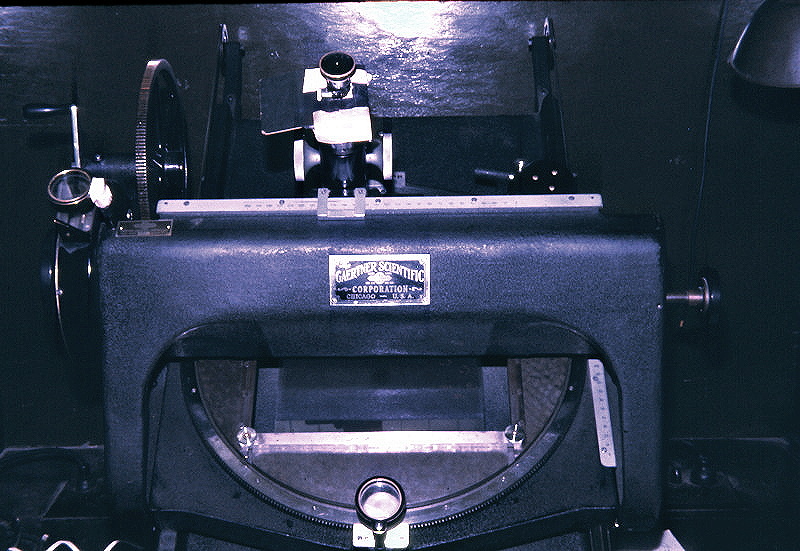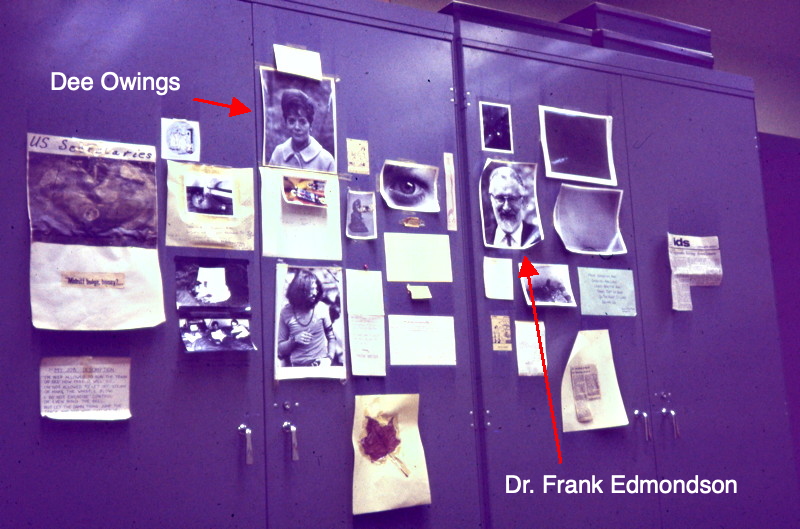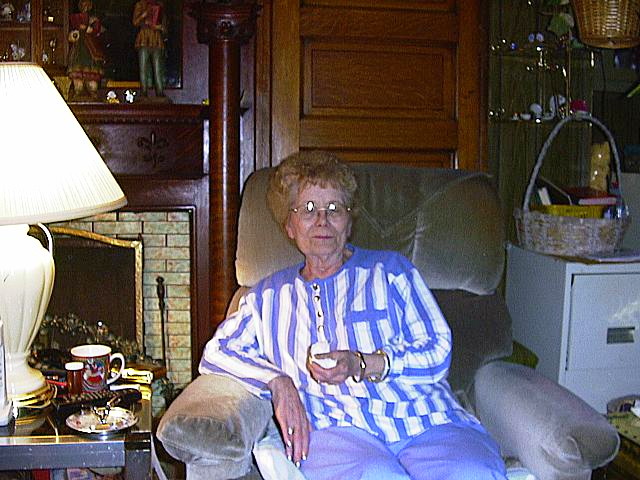Asteroid (1988) Delores
Posted: 24 January 2020
Cloudy skies returned Sunday evening, 19 January 2020. Had 0.42" rain on Tuesday, 21 January. The sky cleared on Thursday, 23 January.
When I was an undergraduate Astrophysics student at Indiana University I had the opportunity to work on the IU Department of Astronomy Asteroid Program. From September 1966 to May 1970 I worked 10 hours/week and after graduation I worked full time until leaving for graduate school in Wisconsin in August 1970. The Director of the Asteroid Program was Dee Owings. During my time on the Asteroid Program my job was mostly to measure asteroid positions on 8x10-inch photographic plates that had been taken at the IU Goethe Link Observatory using a 10-inch astrographic camera. I used this Gaertner Measuring Engine to do the measurements (photo taken in 1967).

For more information about the "Asteroid Program" see this article from the "Indiana Alumni Magazine" (used with permission).
In 1973 I visited Dee at the Asteroid Program office and took this photo of items on some file cabinets that were used to store the photographic plates.

Dee's photo is at the top left side. Dr. Frank Edmondson, the Chair of the Department of Astronomy when I was a student and for many years before and after, is pictured at the right. The Indiana Daily Student published an article about Dr. Edmondson in 2008.
I visited Dee in 2000 after she had retired:

During my four years working on the Asteroid Program I learned a lot from Dee and I came to love asteroids. In 2012 I began imaging asteroids from Cassiopeia Observatory, first with the 8" LX200-ACF and then with the 12" LX600. See my Asteroids & Dwarf Planets Astrophotography page for the images. In 2018 I realized that there are asteroids that had been named for people I know, notably some of my professors at IU and other friends I've come to know through astronomy, and IU related observatories. Here are the special asteroids and the dates when I've imaged them.
Asteroid (1761) Edmondson: Dr. Frank Edmondson, IU Astronomy Dept Chair, 11 January 2018
Asteroid (9144) Hollisjohnson: Dr. Hollis Johnson, IU Astronomy Professor, 7 February 2018
Asteroid (14505) Barentine: Dr. John Barentine, International Dark-Sky Association, 9 April 2018
Asteroid (117736) Sherrod: Dr. Clay Sherrod, Astronomer, 14 April 2018
Asteroid (5536) Honeycutt: Dr. Kent Honeycutt, IU Astronomy Professor, 17 April 2018
Asteroid (1988) Delores: Dee Owings, IU Astronomy Dept Asteroid Program Director, 8 September 2018
Asteroid (1765) Wrubel: Dr. Marshal Wrubel, IU Astronomy Professor, 31 October 2018
Asteroid (9143) Burkhead: Dr. Marvin Burkhead, IU Astronomy Professor, 3 December 2018
Asteroid (1602) Indiana: named for the State of Indiana and Indiana University, 20 December 2019
Asteroid Sherrod is the faintest object I have imaged. It was Mag +19.2.
I had planned to re-image Asteroid Delores, named for Dee Owings, when it was brighter than it was in September 2018, but weather, events, and its orbit prevented that. However, as it was once again nicely positioned in the sky and at Mag. +16.5 I decided to take more images of it this session.
There are several more IU-related named asteroids that I plan to image in 2020. Stay tuned.
|
Open: Thursday, 23 January 2020, 1808 MST Temperature: 63°F |
Session: 1426 Conditions: Clear |
Equipment:
12" f/8 LX600 w/StarLock
2" 24mm UWA eyepiece
Focal Reducer
Camera:
D850 DSLR
SYNCed the observatory clock to WWV time signals.
1815 MST: LX600 ON, StarLock OFF, High Precision OFF.
Viewed the gibbous Venus, 102X
1822 MST: Meade Stella Wi-Fi Adapter ON.
I checked out the locations of two other Indiana University related asteroids using SkySafari 6 Pro on the iPhone 11 Pro Max. I even tried to image them after the end of Astronomical Twilight (1913 MST) but they were too low in the southwestern sky and too faint. I will image them the next time they are near opposition.
1945 MST: the Zodiacal Light was visible.
2036 MST: did a GOTO to Asteroid (1988) Delores using Wi-Fi and SkySafari 6 Pro. Turned Wi-Fi OFF.
Breezes had picked up and seeing was not great.
2044 MST: took this StarLock autoguided image (cropped) of Asteroid (1988) Delores (5 minutes, ISO 6400).

2144 MST: took a second image of Asteroid Delores. This animation shows the movement of Asteroid Delores over the one hour period.

2200 MST: LX600 OFF.
Took a SQM reading and reported it to the Globe at Night.
|
Close: Thursday, 23 January 2020, 2117 MST Temperature: 50°F |
Session Length: 4h 09m Conditions: Clear, breeezy, SQM 21.05 |
Comments are welcome using Email. Twitter users can use the button below to tweet this report to their followers. Thanks.
Cassiopeia Observatory Home Page
Copyright ©2020 Michael L. Weasner / mweasner@me.com
URL = http://www.weasner.com/co/Reports/2020/01/24/index.html
